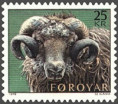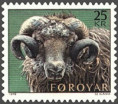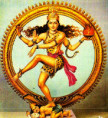BONNARD, PICASSO AND BUSH
One of my uncles was an artist, with an artist's eye. What I as a child appreciated about him was that he like my father always talked with me as if they he was talking to an adult. Even at that rather early age I collected art cards, which I have continued to do during all my life. I do not know how many cards I have by now. Once I sat with my uncle in my room and looked at my cards together with him. He took out some pictures of paintings by Pierre Bonnard, a painter he was impressed and inspired by.
Uncle Gunnar described the pictures and told me about Bonnard's dynamic depictions of colours and light. How his paintings described how you can be dazzled by sunlight in such a way that everything suddenly becomes dark and violet around you. This could happen when you are met by abundant sunshine while you on a hot summer's day step outside from a dark room, into a garden or a glass-covered porch. How light is not uniform but splits up into a great variety of shades. According to Uncle Gunnar, Bonnard had the unique ability to make a viewer see the world through the artist´s eyes; the way he sweeps his gaze across a set table, while the perspective shifts in the process and certain objects appear sharper than others.

Bonnard's art gives the impression of having been created in front of its motifs, but this was rarely the case. He always carried with him pocket calendars in which he quickly threw down sketches and sometimes scribbled down notes about the nature of the light, where it came from and what colours it created.
7th February 1927
Violet in the grey.Vermilion in the orange shadows, on a cold fine day.
12th February 1939
The minute one says one is happy, one isn´t anymore. A painting is a series of marks that join together to form an object or work over which one´s eyes may room freely.
Beside his small pencil drawings he could make short notes like “beautiful”, “blue”, “gloomy rain”, “balance”, “varied yellow”. Then he attached the notes together with post cards, photographs and newspaper clippings on his studio wall and with them as support and inspiration he created his own, unique vision of his surroundings.

It has been said that Bonnard's art was an aftermath of Impressionism and certainly there may be some truth in that statement. He admired Monet and in 1910 bought a house in Vernon, three kilometres from Monet's house in Giverny. At that time the two artists met quite often. Like Monet, Bonnard was fascinated of how light and shades created different colours within a limited space. While Monet painted the colours and light in his water lily pond, Bonnard tried to catch the hues of the foliage outside his terrace in Vernon. Bonnard called his house at the banks of the Seine, in which he lived for sixteen years, Ma Roulette, which may mean both "my roulette" or to be an allusion to the Roma trailer caravans that also were called roulettes, maybe a hint of Bonnard's sense of being a Bohemian, the French denomination for a Roma, i.e. an outsider.
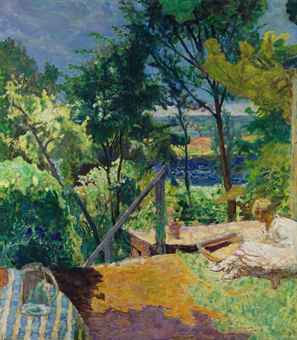
Bonnard regarded himself as a stranger to bourgeois society, or more correctly – he did not care so much about it. He had some close friends throughout his life, whom he visited and wrote letters to, but quite often he isolated himself and he rarely spoke in detail about his personal life. He lived simply, avoided opulence and publicity, even if he as an artist of course needed some of it to make a living.
We do not know much about his emotional life, as matter of fact – almost nothing. Nevertheless, the power of his paintings seems to lie in an intense interaction between inner feelings and outer appearance, between control and expression. In a “day book” he wrote “one never paints violently enough”.
It generally took him a long time to finish a painting. Usually, he worked on several paintings at the same time, some of them took weeks to complete, others years. Painting was for Bonnard a very tangible process, a physical activity. He rarely placed an easel in front of a subject: "Art is not nature, it is colour and composition." For Bonnard art was a blend of impressions provided by reality. This meant that while he was painting he had to step into the life surrounding him, become enveloped by light, which for him was equivalent to an intense physical experience. Painting became an acceptance of existence, a reference to how one should live.
He did not consider himself to be an impressionist painter: "I apply no rules, belong to no school. I strive to create something that is personal." Externally he searched something he sensed within himself - and vice versa: "I have all my subjects at hand, I look for them and take notes so they may come back to me while painting and before I paint I reflect, I dream." According to Bonnard his paintings should be instilled with a life of their own. To contemplate one of his works would be like stepping into a room and in one swoop take in the entire scene; to meet glimmering patches of light, glimpse dark corners and someone whose presence you sensed before focusing her.

And most importantly – capture the light that makes everything alive. Bonnard stated that a museum would be meaningless without its windows, it is the light streaming in through them that provides life and presence to the exhibited artworks. "Few of us know how to look at the things that surround us, people who really are able to see." After the death of his life companion and constant model, Marthe, he continued to paint her from memory, as vivid as when he had met her fifty years earlier. A few years before his own death Bonnard found a new model, Dina Vierny, who later stated that the artist often told her that she had to "live in front of him."

For Bonnard art was an incessant search, a process. When he started a painting he generally kept its centre empty, then he gradually made his way inward and while he did so he combined colours and light, which sense and meaning he searched in his memory. For him, memories was a way to describe the world, or as the poet Mallarmé put it "to extend a moment on the swells of memory ".

Bonnard's earlier paintings were cityscapes filled with people and often dark rooms where colours gleamed in the shadows, scenes absent in his later art, which generally is flooded with light. Bonnard depicted the nature in all its power and beauty, especially the female body. A youthful virility is sometimes present in his earlier paintings, as if captured in a flash of memory, allowing a re-enactment of a sensual moment. Like the picture of a naked man and woman, separated by a folding screen. It was painted in 1900, seven years after he met his Marthe, who undoubtedly is the naked woman in the background. Light and nudity unite man and woman, while the screen divides them.

The twenty-six-year old Pierre Bonnard met the, as he then thought, sixteen-year-old Marthe de Méligny in 1893. He knew she came from humble circumstances and manufactured artificial flowers for funeral wreaths and grave decorations. It was only when he married her in 1925 that Bonnard found that Marthe´s real name was Maria Bousin and that she was eight years older than he imagined her to be. During all the years they lived together he never met any member of her family. Occasionally, without Bonnard's knowledge Marthe met a sister whom she told that she was living with an artist, but she did not reveal his name. It has not been clarified why Marthe did not present her family to Pierre Bonnard and why he never seems to have taken an interest in it. There are several mysteries surrounding the reclusive couple. Bonnard never presented Marthe to his upper-class parents and siblings, his father was a senior official at the French Ministry of War.
The rich art collector Thadée Natanson, lawyer, business man, journalist and Bonnard´s close friend and lifelong supporter, described Marthe in the following manner:
She had a birdlike character, always observant, with a frightened air, a predilection for water, to bathe, a weightless gait, as if she had wings …
It is said that Marthe did not like to be seen by strangers and at those rare moments she and Pierre left their home together he brought with him an umbrella, not so much to protect Marthe from sun or rain, but from the gaze of strangers. Even more remarkable then is the fact that she with complete abandon allowed Bonnard to photograph her naked and throughout their life together accepted that he exhibited a large number of paintings depicting her in the nude, often painted in connection with Marthe´s apparently insatiable bathing. They lived alone, surrounded by their cats. Pierre and Marthe did not have any children, though Pierre was fond of children and often painted them, particularly the children of his sister Andrée, whom he often visited, though never in the company of Marthe.

In 1910, Pierre Bonnard came for the first time to the Mediterranean; Saint-Tropez, Cannes, Antibes and Grasse, and Since that time sunlight began to flood in his paintings and he began to move back and forth from Paris to Saint-Tropez and Antibes, mostly spending the summer months in La Roulette, though it was not until after his marriage with Marthe in 1925 that the two of them moved to Le Cannet, a small town north of Cannes.

That year was obviously a turning point in Bonnard's life, but his reticence about his private life means that we do not know how he really felt at that time. In 1918, Bonnard met the young and lively model Renée Monchaty and asked her to model for him. We see her in his painting A Bowl of Milk.

Renée soon moved in with Pierre and Marthe. We do not know how the reclusive Marthe reacted to the presence of the houseguest, though there must have been tension since Renée soon became Pierre´s lover. In a painting from 1921 the golden-haired Renée smiles at us, sitting by a table in Bonnard´s garden, from the lower right corner Marthe is watching her rival.
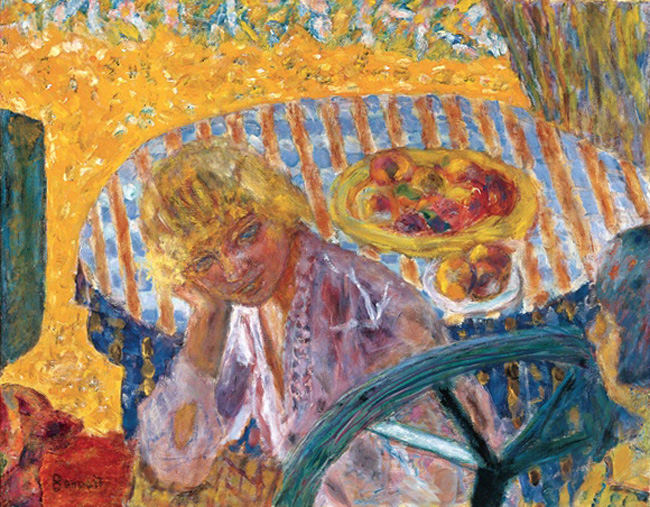
That same year Pierre left Marthe and travelled to Rome with Renée, a stay that only left one painting of La Piazza del Popolo and some sketches in Bonnard´s “day book”. When they returned Renée was even more attached to Pierre, who apparently began to spend more time with her than with Marthe. However, after a few years Pierre left Renée Monchaty and married Marthe. A month after the marriage, a desperate Renée committed suicide. A rumour soon spread that she had killed herself in a bathtub, Bonnard's bathroom depictions of the naked Marthe were already well known. As a matter of fact Renée had adorned her bed with flowers, placed herself on top of them and shot herself in the head.

Bonnard was deeply shaken and hid away his paintings of Renée, only to rework them after Marthe´s death in 1942. Shortly after the wedding and Renee´s suicide Bonnard painted an eerie picture of the naked Marthe, who like Ophelia is submerged in water. It looks as if she is reclining in a sarcophagus. However, soon again the shimmering light returned to Bonnard's paintings and occasionally we even get a glimpse of Marthe´s face, which in the past often was kept more or less hidden from the viewer.
Nevertheless, the shimmering light soon returned to Bonnard's paintings and sometimes we even get a glimpse of Marthes face, which in the past often had been more or less hidden from the viewer.

Marthe died in January 1942, according to Bonnard, she had never been quite healthy, but we do not know the kind of ailment she was suffering from. The doctors had told Bonnard that Marthe had survived longer than they expected. It was only after Marthe´s death that Bonnard's family found out that they had lived together for nearly fifty years and her sister got to meet Bonnard, who by now was a famous artist. After the funeral, Bonnard wrote to Matisse:
My dear Matisse,
I have some sad news for you. After a month's illness, her lungs being affected along with her digestive tract, my poor Marthe died of cardiac arrest. Six days ago we buried her in Le Cannet cemetery. You can imagine my grief and solitude, filled with bitterness and worry about the life I may be leading from now on.
I'm staying here, where I may have the company, for the time being, of one of my nephews.
Later, I may have the courage to move around a bit and venture as far as Nice.
Yours,
Bonnard
After writing about Bonnard I am now sitting in the kitchen with a cup of coffee in front of me. I bought the mug several years ago at the airport in Madrid and it is decorated with The Guernica, Picasso's largest painting and probably his most ambitious work, undeniably the world's most famous anti-war painting.

Picasso was no great admirer of Bonnard's art. In her book Life with Picasso, in which Françoise Gilot tells us about her fascination with the great artist at the same as she divulges how he mistreated and beat her, she mentions Picasso´s aversion to Bonnard:
Don´t talk to me about Bonnard. That´s not painting what he does. He never goes beyond his own sensibility. He doesn´t know how to choose. When Bonnard paints a sky, perhaps he first paints it blue, more or less the way it looks. Then he looks a little longer and sees some mauve in it, so he adds a touch or two of mauve, just to hedge. Then he decides that maybe it´s a little pink, too, so there´s no reason not to add some pink. The result is a pot-purri of indecision. If he looks long enough, he winds up adding a little yellow, instead of making up his mind what colour the sky really wants to be. Painting can´t be done that way. Painting isn´t a question of sensibility; it´s a matter of seizing the power, taking over the nature, not expecting her to supply you with information and good advice. That´s why I like Matisse. Matisse is always able to make an intellectual choice about colours. Bonnard … [is] not really a modern painter; he obeys nature, he doesn´t transcend it … Bonnard is the end of an old idea, not the beginning of a new one. The fact that he might have had a little more sensibility than some other painter is just one more defect as far as I´m concerned. That extra dose of sensibility makes him like things one shouldn´t like.
Who would expect that the competition- and audience-conscious Picasso, the left-wing radical, entertainer, macho and artist archetype, would appreciate the conservative and reclusive Pierre Bonnard? Though Bonnard was an admirer of Picasso and had several of his pictures pasted on his studio walls as an inspiration. Bonnard - or rather the respect that increasingly was rendered to him - must have annoyed Picasso. Not the least since his sincerely admired Matisse often praised his friend Bonnard as a genius.

Picasso was indeed a master painter and in the quote above we discern why - he was bold and innovative. His mastery did not rest so much on his colour treatment, but in the secure, driven and hard lines with which he could transform reality and even, as in the dynamic and furious Guernica, generate debate, outrage and anger. Picasso was not a timid weakling who behind his high garden walls painted flowers, or a constantly bathing lady. No, Picasso was a bare-breasted titan that went to grips with nature and tried to wrestle her down: "Art is not made to decorate rooms. It is an offensive weapon in the defence against the enemy."

Bonnard's shortcomings as an innovative artist are regularly conjured up in current art criticism. For example by the influential Peter Schjeldahl, who writes in The New Yorker. I must confess that I do not always understand his writings:
There is decadence that excites and decadence that enervates. Bonnard´s is the second sort: edgeless, nerveless, weird, fussy. He isn´t mindless, but he withholds his mind from his transactions with painting. For thought, he substitutes maundering on autopilot. His compass is a vague tastefulness. This comforts people who dislike thinking. I submit that such people are already comfortable enough, on their own lookout, and should not be indulged.
Dislike of Bonnard's art can even turn into hatred, as by Linda Nochlin, whose Realism is one of my favourite art books:
I am so repelled by the melting of flesh-and-blood model into a molten object of desire of the male painter that I want to plunge a knife into the delectable body-surface.

Another one of the art critics I like to read, John Berger, does not like Bonnard either, though he is not so harsh in his condemnation as Linda Nochlin, in fact he points to a lot of what I like about Bonnard:
Some now claim that he is the greatest painter of the century, a general retreat among certain intellectuals from political realities and confidence. There is very little of the post-1914 world in Bonnard´s work. There is very little to disturb – except perhaps the unnatural peacefulness of it all. His art is intimate, contemplative, privileged, secluded. It is an art about cultivating one´s own garden. […] Bonnard was essentially a conservative artist – although an original one. The fact that he is praised as a ´pure painter´ underlines this. The purity consisted in his being able to accept the world as he found it.
In his art, Picasso did not at all accept the world as he found it. He wanted to change and influence. He regarded himself as a creator and could even compare himself to God:
God is really only another artist. He invented the giraffe, the elephant and the cat. He has no real style, He just goes on trying other things.

This continous experimenting and uninhibited creativity have made Picasso into the archetype of an artist, like Einstein who has become the prototype for a scientist. Something that makes me think of one of the few funny stories I know. It was told to me several years ago, and some of you might have heard it as well:
Due to some mishap affecting communications between Heaven and Earth, Albert Einstein, Pablo Picasso and George W. Bush end up outside the Heavenly Gates at the same time, there they are met by St. Peter, who explains to them that it now has become increasingly difficult to cross borders on Earth, if you cannot provide acceptable proofs of your true identity, Heaven has also introduced its own version of fool proof identity verification. Deceased aspirants to heavenly bliss must now prove who they are through a practical test. St. Peter first turns to Einstein:
- Well, who are you?
- You should know that. I'm Albert Einstein, one of the most brilliant scientists ever.
- Aha, and why would I believe that? Anyone with a strange German accent and his hair on end may claim he is a genius. You must prove that you truly are the Einstein.
St. Peter claps his hands and two angels come running with crayons and a blackboard.
- Show me how you came up with the theory of relativity.
- Easy, answers Einstein, and quickly fills the blackboard with numbers, dashes and squiggles, until he ends it all up by writing: E = MC².
He wipes the chalk dust from his hands, smiles at St. Peter and says:
- Quod erat demonstrandum.

Saint Peter looks at the calculations and nods:
- I am only a simple fisherman, but I think that looks quite impressive. You must be Albert Einstein. Welcome to Paradise!
He then turns to Picasso:
- And who might you be?
- Isn´t it quite obvious! I am Pablo Picasso! The greatest artist who ever lived!
St. Peter smiled indulgently:
- We have had many here at the Pearly Gates who have claimed to be Picassos. Can you prove you´re the one?
- Naturalmente! Bien sûr!
St. Peter claps his hands and angels show up with a palette, paints, a canvas and an easel. Quickly and assuredly Picasso crates a painting with bulls, naked women and fruits. And signs it with a catchy:

Saint Peter admires the artwork, nods and states:
- You must be Pablo Picasso. Welcome in!
Then he turns to George W. Bush:
- And who might you be?
- Everybody knows that. I'm George W. Bush. I was a US President.
- Hm, only the fact that you claim to be George W. Bush makes me somewhat hesitant whether we really should let you in here. If you are Bush you caused quite some misery down there.
- I am deeply religious and happen to know that you up here forgive everything.
- Well, let's go for it. But, can you do anything?
- Do something? I was the US president. Is that not enough?
- But you have to prove that it is really you who are George W. Bush. You have to give me a proper proof of your identity. Einstein proved the theory of relativity, Picasso made a painting. What can you do?
- Einstein and Picasso, who are they?
St. Peter´s jaw dropped in sheer amazement:
- Do you not know who they are? Only George W. Bush can be so badly informed. Welcome in!

Now, the fact is that Bush and Picasso have something in common. Bush paints and he even share motifs with Bonnard. The former president is namely fond of depicting bathroom motifs, though not images of beautiful ladies in the bath, but with himself as the central figure.
There is also a link between Bush and Picasso's Guernica, which seems to point to that painting´s sustainable strength as anti-war propaganda. On February 5, 2003, US Secretary of State, the war hero Colin Powell, stepped into the UN Security Council to carry out a famous song - and dance number, which was the starting point of the US invasion of Iraq and all the misery that followed. With an admirable panache he presented unfounded fantasies and even held up a test tube to show how much anthrax that was needed to knock out a city. In the light of following developments it was an embarrassing scene.
On the way into the Council´s Chamber Colin Powell passed a tapestry, a replica of Picasso's Guernnica, as large as the original. It had been donated to the UN by the multimillionaire, and once US vice president, Nelson Rockefeller, good friend and patron of Picasso. Rockefeller had bought the tapestry from Picasso since the artist had refused to sell the original to him. It was one of 18 large tapestries made from Picasso's works and designed by him, paid for by the Rockefeller. To distinguish them from the originals Picasso had given them all a sepia brownish tint.

However, on his way in to the Security Council to keep his fateful speech Colin Powell could not see the Guernica since a few days back it had been covered by a "baby blue" cloth with the UN logo. An act which generally was interpreted as a goodwill gesture by the UN leadership to the mighty US Government - they did not want to unnecessarily provoke it by exposing the world's most famous anti-war work of art, particularly not when then the US Secretary of State was going to plead for support to a war effort. The United Nations vehemently denied the allegations that the Guernica had been covered since its pacifist message could have been considered as offensive. The UN Secretary-General Kofi Annan noted: "If you heard all the things done in my name, you´d think I was everywhere. I heard it [the reason] was artistic."
The artistic reason to why the Guernica was covered was said to be that when the UN weapons inspector Hans Blix a few days earlier had been interviewed about his well-founded opinion that Iraq had no weapons of mass destruction, this interview had taken place in front of the Guernica and the cameraman in charge had found it disturbing that Hans Blix had been filmed and photographed "next to the backside of a rearing horse."

Up in his Heaven, Picasso would certainly have appreciated all the commotion his work had created, while Bonnard would have shrugged his shoulders and continued to paint the Mediterranean light in his garden.
Amory, Dita (ed.) (2009) Pierre Bonnard: The Late Still Lifes and Interiors. New York: The Metropolitan Museum of Art/Yale University Press. Barnes, Julian (2015) Keeping an Eye Open: Essays on art. London: Jonathan Cape. Benedetti, Maria Teresa (2011) “Bonnard” Artedossier No. 277. Berger, John (2001) Selected essays, edited by Geoff Dyer. New York: Pantheon Books. Gilot, Françoise (with Carlton Lake) (1989) Life with Picasso. New York: Anchor Books/Doubleday. Nochlin, Linda (1998) “Bonnard´s Bathers” in Art in America, July. Pisik, Betsy (2003) “U.N. Report: The Picasso Cover-up” in The Washington Times, February 8. Schjeldahl, Peter (1998) “The Master Bather: Pierre Bonnard at the Museum of Modern Art” in The Village Voice, July 28. Terrasse, Antoine (2006) Bonnard “La couleur agit”. Paris: Gallimard.


